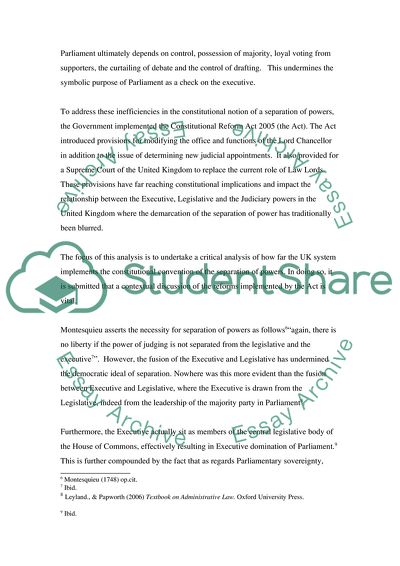Cite this document
(The Separation of Powers in The UK Essay Example | Topics and Well Written Essays - 2000 words, n.d.)
The Separation of Powers in The UK Essay Example | Topics and Well Written Essays - 2000 words. Retrieved from https://studentshare.org/law/1730708-public-law-the-writer-must-hold-a-degree-in-law-and-have-alraedy-experiance-in-making-public-law-assignments
The Separation of Powers in The UK Essay Example | Topics and Well Written Essays - 2000 words. Retrieved from https://studentshare.org/law/1730708-public-law-the-writer-must-hold-a-degree-in-law-and-have-alraedy-experiance-in-making-public-law-assignments
(The Separation of Powers in The UK Essay Example | Topics and Well Written Essays - 2000 Words)
The Separation of Powers in The UK Essay Example | Topics and Well Written Essays - 2000 Words. https://studentshare.org/law/1730708-public-law-the-writer-must-hold-a-degree-in-law-and-have-alraedy-experiance-in-making-public-law-assignments.
The Separation of Powers in The UK Essay Example | Topics and Well Written Essays - 2000 Words. https://studentshare.org/law/1730708-public-law-the-writer-must-hold-a-degree-in-law-and-have-alraedy-experiance-in-making-public-law-assignments.
“The Separation of Powers in The UK Essay Example | Topics and Well Written Essays - 2000 Words”, n.d. https://studentshare.org/law/1730708-public-law-the-writer-must-hold-a-degree-in-law-and-have-alraedy-experiance-in-making-public-law-assignments.


